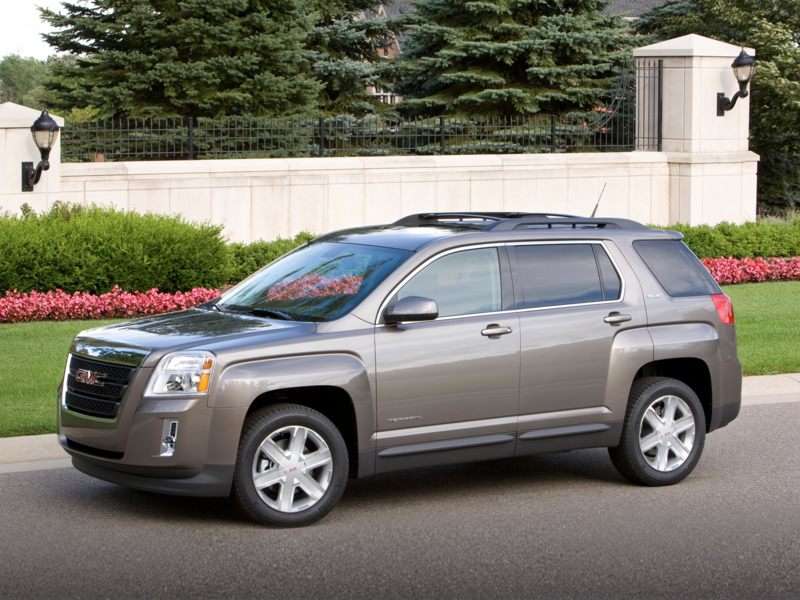Recent Articles
Popular Makes
Body Types
10 Things You Should Know About the 2010 GMC Terrain
A new compact SUV with some bold claims and even bolder design
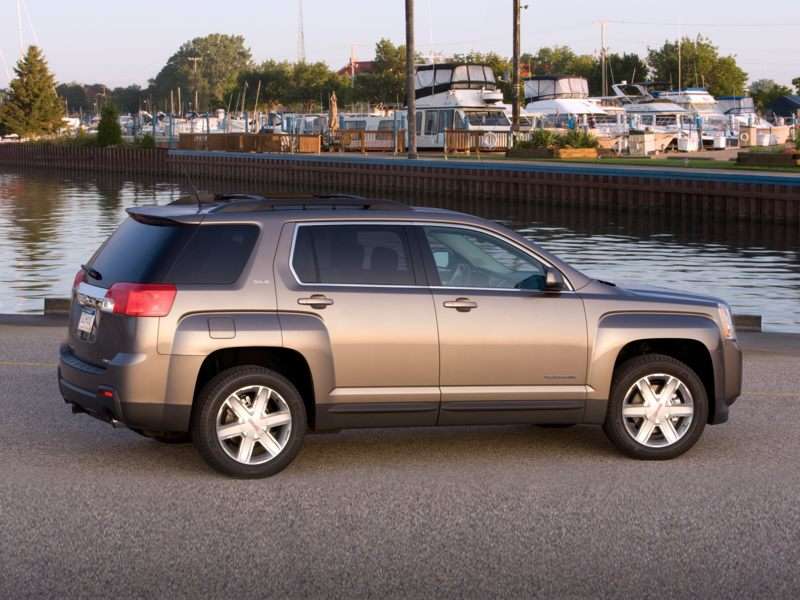
2010 gmc terrain
Downsizing. Prior to being hijacked by corporate America, this simple word meant just what you’d think – to cut back in number or make smaller. Not a pleasant thought as an employee, but perfectly sensible for empty nesters with large homes, parents with an increasing number of bills to pay, and others. As fuel prices continue their upward climb, car buyers have also adopted the practice of downsizing, which has led to the development of new models like the 2010 GMC Terrain. Arriving late to the party hosted by the Honda CR-V and Toyota RAV4, the Terrain steals a bit of the spotlight with its blocky styling and 32-mpg highway rating. Consider it a genuinely competitive though not outstanding offering from GMC. Here are 10 things we think every buyer should know about the 2010 GMC Terrain.
By Thom Blackett Photos Courtesy of: GMC
#10. Initial tests prove the 2010 GMC Terrain to be a very safe vehicle.
The 2010 GMC Terrain is so new that the government’s crash test authority, the National Highway Traffic Safety Administration (NHTSA), hasn’t tested this little crossover yet. However, the Insurance Institute for Highway Safety (IIHS) has, awarding the Terrain its Top Safety Pick award due to excellent results in frontal- and side-impact tests. Part of that outcome is due to the inclusion of six standard airbags. Among the other safety features found on every 2010 GMC Terrain are antilock brakes, StabiliTrak stability control, and a tire pressure monitor. Buyers also benefit from a complimentary year of OnStar’s Safe and Sound plan, offering everything from automatic crash response services to hands-free calling.
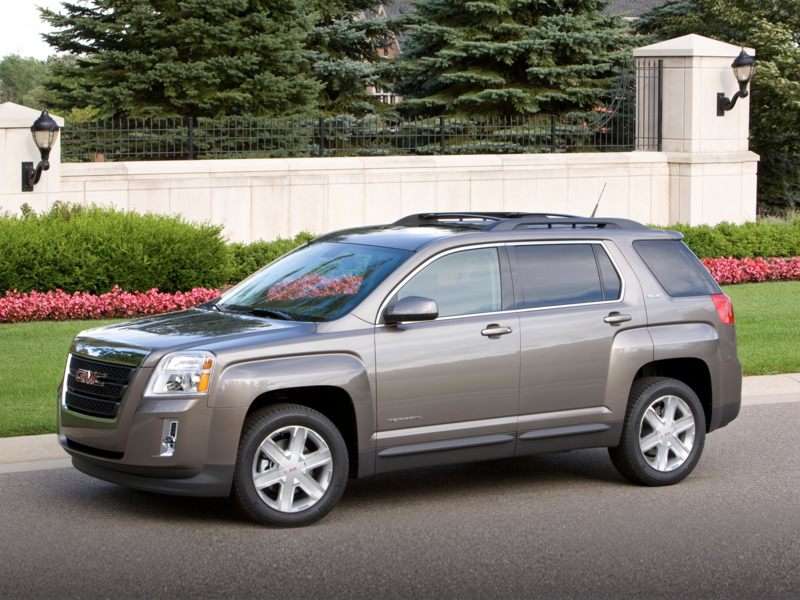
#9. Terrain prices start at $24,995 and top out at about $38,000.
At the bottom of the 2010 GMC Terrain ladder is the SLE-1, which starts at $24,995 (all prices include a $745 destination charge) and delivers a full array of power features, not to mention cruise control and foglights. Next up is the SLE-2, starting at $26,595 and adding Bluetooth compatibility and automatic climate control. At $28,195 you’ll be in SLT-1 territory, home of standard leather upholstery and heated seats. For $29,995, the Terrain SLT-2 packs ambient lighting, a sunroof, rear park assist, and a programmable power liftgate. All-wheel-drive capability drives the price up by $1,750, and access to the 3.0-liter V-6 will cost you $1,500. A fully-loaded 2010 GMC Terrain rings up at just over $38,000. By comparison, Honda CR-V and Toyota RAV4 models start at about $22,500 and max out at about $33,000.
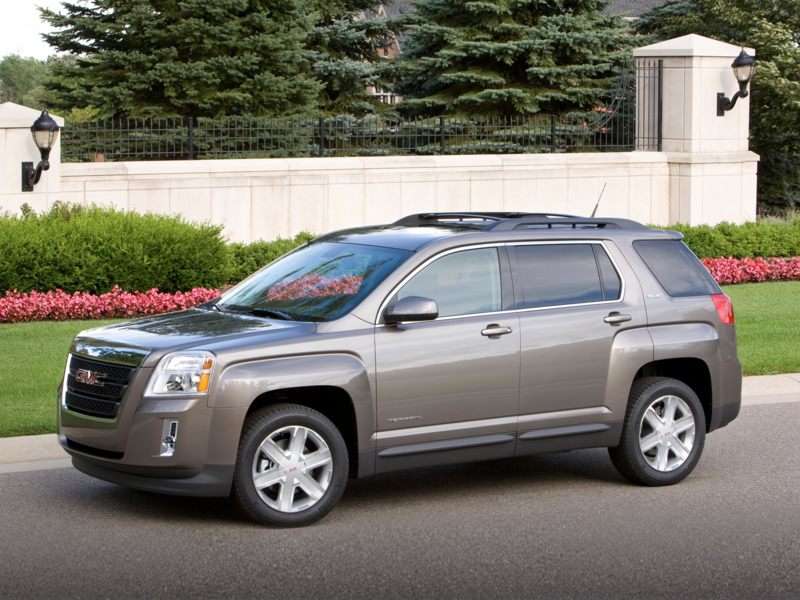
#8. It costs less to get into the competition, but the Terrain offers more standard features.
In exchange for roughly $2,500, the entry-level 2010 GMC Terrain adds a few items you won’t find on the base Honda CR-V and Toyota RAV4, the two biggest competitors in this segment. For instance upgrades include 17-inch alloy wheels, XM satellite radio, rear privacy glass, and an especially useful rearview camera display built into the interior mirror. Buyers are also treated to a USB port and a remote start system that’s great for warming things up on a cold morning.
Shift your eyes to the options list and you’ll find a navigation unit paired with a Pioneer sound system and 40-gigabyte hard drive, and one particularly handy treat for families that travel -- a rear entertainment system comprised of input jacks, wireless headphones, and two flip-up screens (not offered on the Honda CR-V or Toyota RAV4).
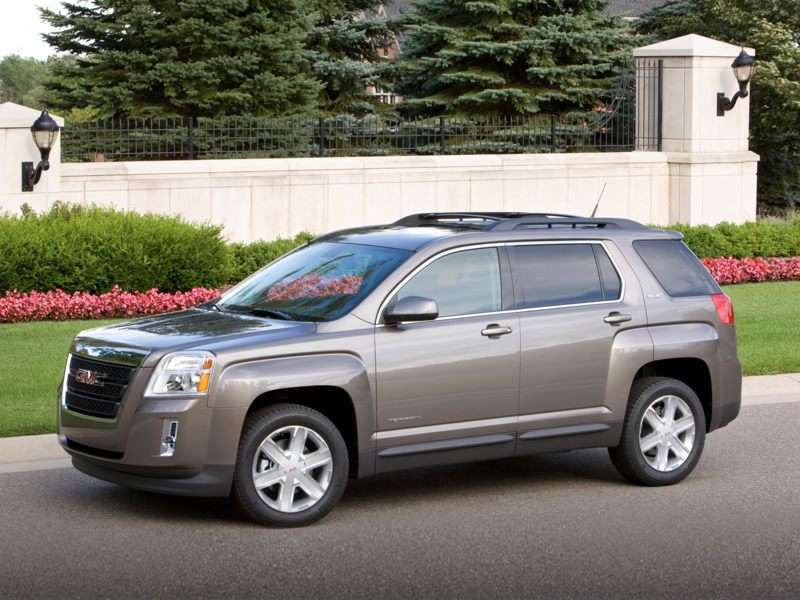
#7. The Terrain offers class-leading fuel economy and competitive towing capacity…just not at the same time.
The front-wheel-drive version of the GMC Terrain offers a 2.4-liter, 182-horsepower four-cylinder engine, and gets an EPA rating of 32 mpg on the highway. All Terrains come with a smooth-shifting six-speed automatic transmission. Compared to four-cylinder, front-wheel-drive versions of the Honda CR-V and Toyota RAV4, the Terrain steals the show (28 mpg highway for the CR-V and RAV4). Due to its 1,500-lb. towing capacity and sometimes sluggish response, this engine is best suited to drivers who commute in town or cruise casually on the highway. Drivers who want more impressive oomph behind the gas pedal and the ability to pull up to 3,500 lbs. should select the 3.0-liter, 264-horsepower V-6, though be prepared record only 25 mpg on the highway. The Toyota RAV4, with its 269-horsepower 3.5-liter V-6 (the Honda CR-V doesn't offer a V-6), betters the GMC by two mpg in town and on the highway, and with front- or all-wheel drive.
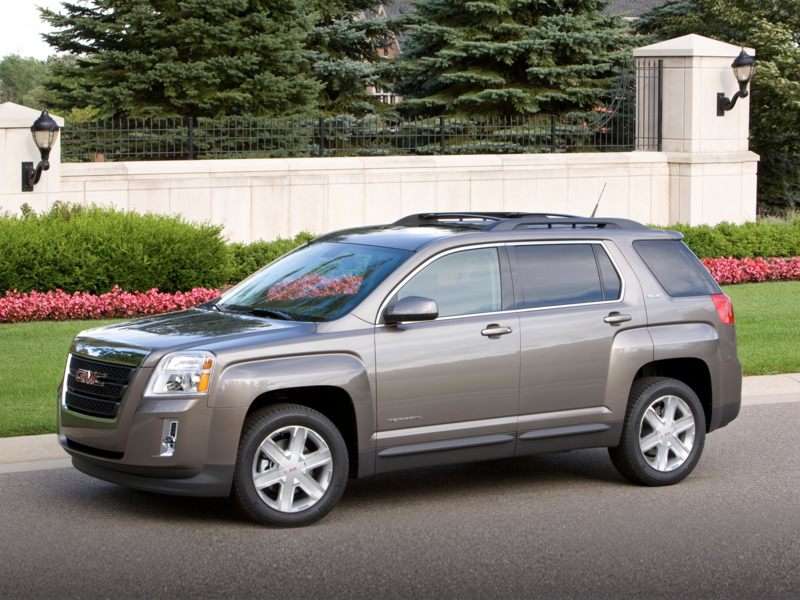
#7. The Terrain offers class-leading fuel economy and competitive towing capacity…just not at the same time.
Four-cylinder examples of the GMC Terrain are fitted with a standard 17-inch wheel and tire combination, whereas Terrains packing V-6 power roll on 18- or 19-inchers. In addition, buyers of the four-cylinder Terrain get an electric power steering system improves fuel efficiency relative to the hydraulic unit matched with the V-6. As a result of these differences, the four-cylinder version delivers a softer ride and lighter steering. During our short drive around Michigan we didn’t get a chance to thoroughly test the handling, but on a few twisty roads the V-6’s 19-inch Hankook Optima tires made the ride relatively firm. They also exhibited better grip and did a better job of translating road feel.
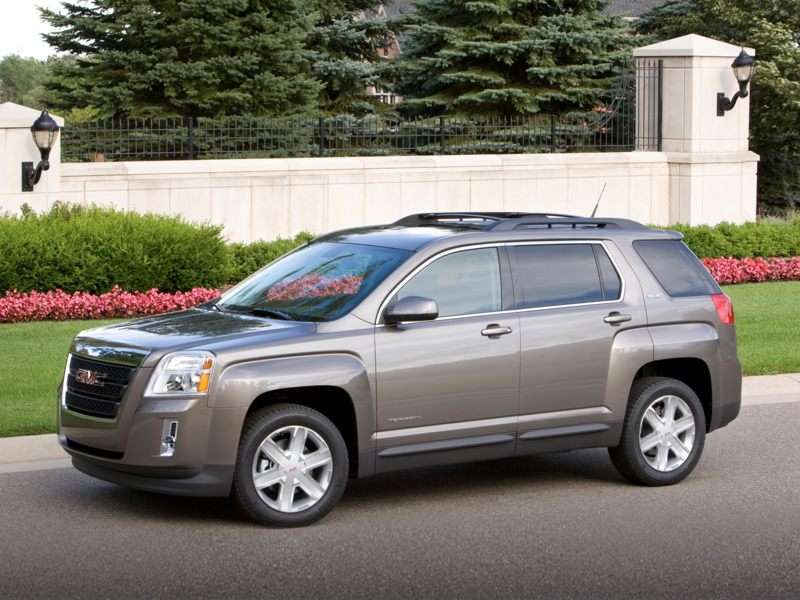
#5. If you’re neutral on styling and can go without a few features, consider the less expensive 2010 Chevrolet Equinox.
From a chassis, powertrain, and drivetrain perspective, the GMC Terrain and redesigned 2010 Chevrolet Equinox are identical, yet unlike past efforts at differentiating what are essentially twin vehicles, styling differences go beyond tweaked headlights and a few badges. In fact, these two crossovers share a roof panel and little else. The Terrain’s appearance is meant to impart the more rugged, upscale image associated with the GMC brand, deserved or not. Buyers choosing the Terrain over the Equinox will pay a premium of about $1,800, and in return get a few added standard features like the interior rearview camera, a power driver’s seat, and foglights. Yup, that’s about it.
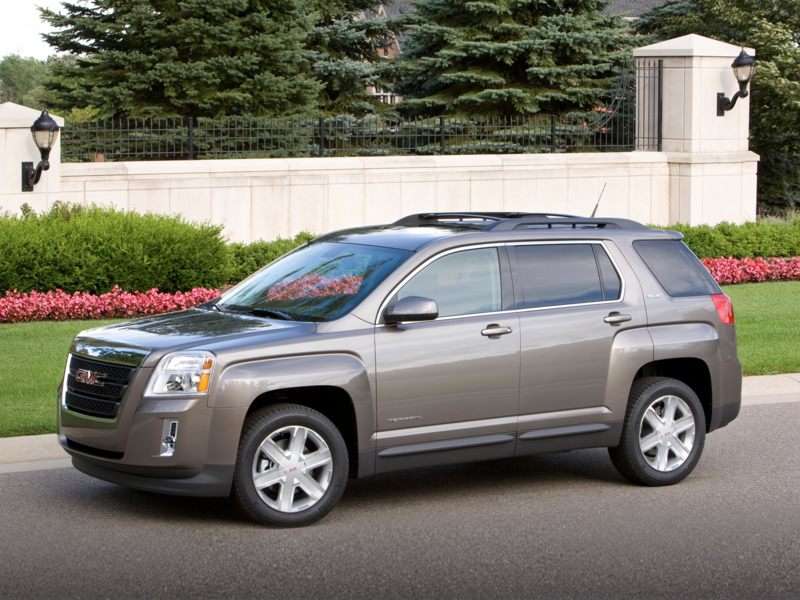
#4. Downsizers will give up considerable capability, but save boatloads of fuel and cash.
Let’s compare the five-passenger 2010 GMC Terrain to two of the more popular larger SUVs on the road, the Chevrolet Tahoe and Ford Explorer. Move to the Terrain and you’ll give up access to V-8 power, a third row bench and seating for up to nine passengers, and a tow rating up to 8,400 lbs. (3,500 lbs. for the Terrain). Fold down the Terrain’s rear seats and you’ll create 63.9 cubic feet of cargo space; the Explorer and Tahoe provide 85.8 and 108.9 cubic feet, respectively. And due to its smaller dimensions, the Terrain offers less hip and shoulder room. On the other hand, the 2010 GMC Terrain boasts more second row head and leg room, up to 32 mpg versus the others’ 20 mpg, and a base price that’s $4,000 less than the Explorer and $13,000 less than the Tahoe.

#3. There are a few areas where the 2010 GMC Terrain should be improved.
We walked away from the 2010 GMC Terrain with very few complaints, but did notice that more attention should’ve been paid to the little things. Some might view them as trivial, but chances are long-term owners would appreciate power windows that automatically go down and up, rear seats that fold completely flat, and impressive interior materials. Admittedly, the Terrain includes some nice rubberized grips and a thin leather cover atop the gauges, but you’ll find more soft-touch surfaces, and with them a greater sense of quality, in a 2010 Ford Edge. Simply put, hard plastics usually feel and look cheap – the 2010 GMC Terrain has too many of them.

#2. Now could be one of the best times to consider a GM vehicle like the Terrain.
As painful as recent bankruptcy proceedings were for the company and its countless stakeholders, post-bankruptcy General Motors has a fresh perspective in the boardroom, a portfolio represented by some of GM’s best products in decades (Chevy Malibu and Cadillac CTS, just to name two), and billions of bailout dollars to put toward the research and development of four brands (GMC, Chevrolet Buick, Cadillac) instead of eight. More importantly, new vehicles like the 2010 GMC Terrain, while less than perfect, are worthy of being compared with models from other manufacturers, and not simply with previous, slightly-less-mediocre GM products.
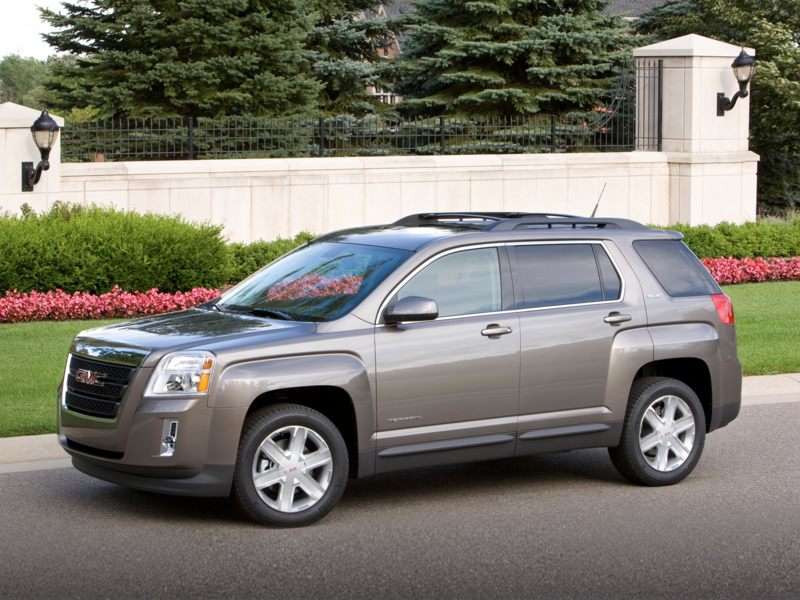
#1. If you’re in the market for a small crossover, the 2010 GMC Terrain warrants a test drive.
For those attracted to the Terrain’s boxy styling, this little SUV packs everything from a comfortable interior to a 3,500-lb. towing capacity, not to mention goodies like standard XM satellite radio, the available rear entertainment system, a sliding second row seat that adds gobs of leg room, and a 100,000-mile powertrain warranty. And, as of this writing, you can return your new Terrain within 60 days if you decide you don’t like it. If, on the other hand, you’re interested in paying less and getting more space, make sure to check out the added cargo room in the Honda CR-V or the available third row seat in the Toyota RAV4.
